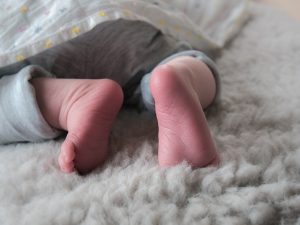Designing a nursery for your baby is an exciting and rewarding experience, but ensuring it is free from environmental hazards is essential. Infants are especially vulnerable to toxins, allergens, and other safety risks, so a careful approach is necessary when selecting materials, furniture, and décor. Here’s how to create a safe and healthy nursery that promotes your baby’s well-being.
so a careful approach is necessary when selecting materials, furniture, and décor. Here’s how to create a safe and healthy nursery that promotes your baby’s well-being.
Choose Non-Toxic Materials
Many paints, furniture finishes, and flooring materials contain volatile organic compounds (VOCs), which can off-gas harmful chemicals into the air. To reduce exposure, opt for low-VOC or zero-VOC paints and finishes. When selecting furniture, prioritize solid wood pieces with water-based finishes over particleboard or MDF, which often contain formaldehyde.
Ensure Proper Ventilation
Indoor air quality is crucial for a baby’s health. Increase ventilation by opening windows regularly and using an air purifier with a HEPA filter. Avoid air fresheners, scented candles, and synthetic fragrances, as they can introduce harmful chemicals into the air. Houseplants such as spider plants and peace lilies can help naturally purify the air, but ensure they are non-toxic to children.
Opt for Organic and Hypoallergenic Bedding
Babies spend most of their time sleeping, making their bedding a critical factor in their environment. Choose organic cotton or bamboo crib sheets and mattresses free from flame retardants, PVC, and synthetic dyes. Look for mattresses made from natural latex, wool, or organic cotton rather than polyurethane foam, which can emit harmful chemicals.
Reduce Exposure to Electromagnetic Fields (EMFs)
Minimize EMF exposure by placing the crib away from electrical outlets, Wi-Fi routers, and large electronic devices. If using a baby monitor, opt for a low-EMF model and position it at least six feet away from the crib.
Select Safe Flooring
Carpets can trap dust, allergens, and chemicals, making hardwood or cork flooring a healthier choice. If you prefer carpeting, choose low-VOC options and vacuum frequently with a HEPA filter. Use area rugs made from organic wool or cotton rather than synthetic fibers treated with flame retardants.
Be Mindful of Toys and Décor
Ensure all toys are BPA-free, lead-free, and phthalate-free. Avoid plastic items whenever possible, opting instead for natural wood, organic fabric, or silicone alternatives. Check décor items for non-toxic certifications, and avoid vinyl wall decals or foam decorations that may contain harmful chemicals.
By taking these precautions, you can create a nursery that is not only beautiful but also safe and free from environmental hazards. Your baby’s health and safety are the top priorities, and a thoughtfully designed space will provide them with the best possible start in life.








